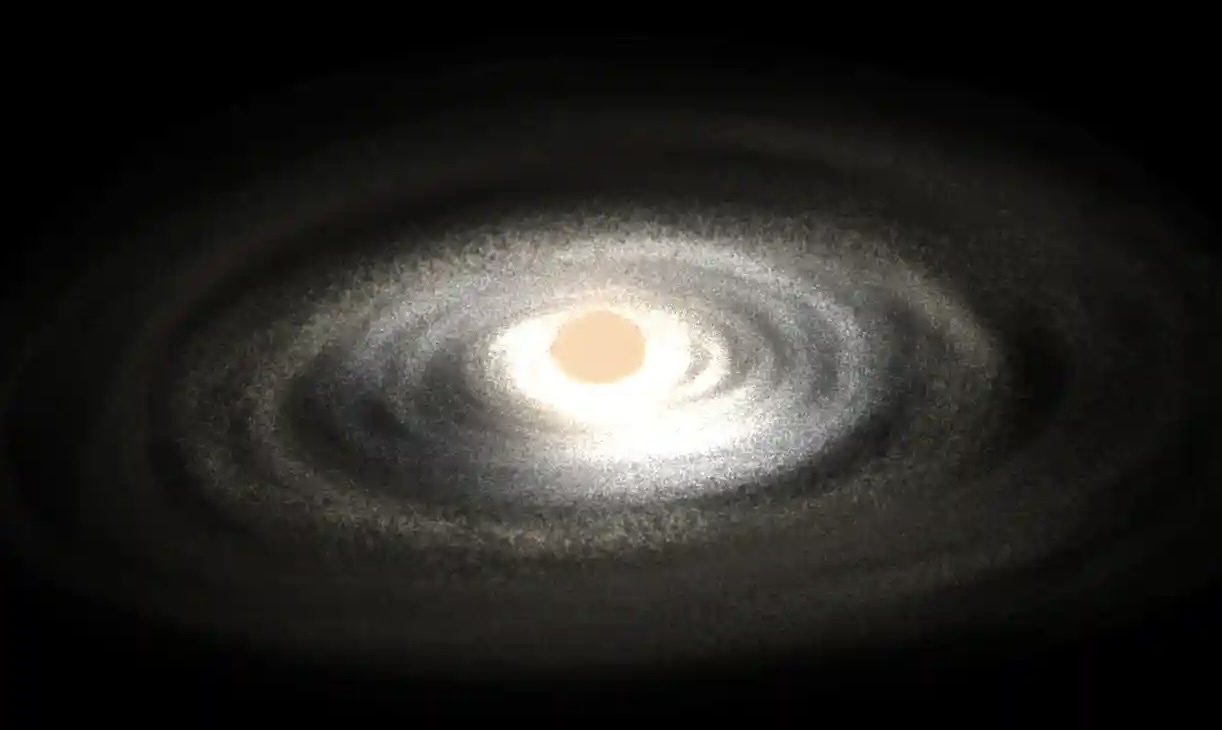27.01.2024
Stars sat fading quietly for years before suddenly puffing out vast clouds of smoke

Artist's impression of an eruption in the disc of matter around a newborn star. The innermost part of the disc becomes hotter than the star itself.
Astronomers have discovered a mysterious group of giant elderly stars at the heart of the Milky Way that are emitting solar system-sized clouds of dust and gas.
The stars, which have been named “old smokers”, sat quietly for many years, fading almost to invisibility, before suddenly puffing out vast clouds of smoke. The discovery was made during the monitoring of almost a billion stars in infrared light during a 10-year survey of the night sky.
“They’re sitting there and just suddenly throwing off matter,” said Prof Philip Lucas of the University of Hertfordshire, who led the observations. “It’s a new type of star and they all seem to be clustered in the same part of the sky, very close to the centre of our Milky Way galaxy.”
The astronomers had set out to capture rarely seen newborn stars – known as protostars – while undergoing the equivalent of a stellar growth spurt. During these periods, young stars rapidly acquire mass by gorging on surrounding star-forming gas, leading to a sudden increase in luminosity.
The team tracked hundreds of millions of stars and identified 32 erupting protostars that increased in brightness at least 40-fold and in some cases more than 300-fold.
Another group of red giant stars near the centre of the Milky Way unexpectedly showed up in the analysis, however. When they were studied in more detail using the European Southern Observatory’s Very Large Telescope, seven of the stars were deemed to be a new type of red giant star, which the researchers named “old smokers”. Convection currents and instabilities within the star could trigger the release of enormous columns of smoke, Lucas suggested.
“These are solar system-sized clouds,” said Lucas. “Our guess is that these are puffs of dust in one direction, possibly from one patch on the surface of the star.”
The findings have wider significance because material released into interstellar space from dying stars seeds the next generation of stars.
“The discovery of a new type of star that throws off matter could have wider significance for the spread of heavy elements in the nuclear disc and metal-rich regions of other galaxies,” said Lucas.
Quelle: The Guardian
